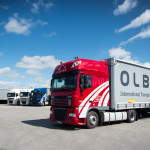TRANSPORT OF Dangerous Goods
We deal with the transport of dangerous goods on a daily basis. We can manage with any goods that can be carried with a curtain trailer, except for those in classes 1 and 7 (explosives and radioactive substances). Just like regular cargo, we can carry dangerous goods in full and partial loads.
Some examples of dangerous goods we often carry are different kinds of fertilizers and plant protection products, oils, lubricants, varnishes, home and car chemicals, cosmetics and perfumes.
A UN-number is a four-digit identification number preceded by the letters UN (i.e. UN1234). These numbers are used to identify dangerous goods and the system is standard for transport classes all over the globe.
Classes of goods – dangerous goods are classified according to their risk properties. Each substance can only belong to one class of dangerous goods and this classification is done based on its most important property. There are 13 classes of dangerous goods:
- 1 – Explosive substances
- 2 – Gases
- 3 – Flammable liquids
- 4.1 – Flammable solids, self-reactive substances, and solid desensitized explosives
- 4.2– Substances liable to spontaneous combustion
- 4.3 – Substances which, in contact with water, emit flammable gases
- 5.1 – Oxidizing substances
- 5.2 – Organic peroxides
- 6.1 – Toxic substances
- 6.2 – Infectious substances
- 7 – Radioactive material
- 8 – Corrosive substances
- 9 – Miscellaneous dangerous substances
Packing groups – are groups used for the purpose of determining the degree of protective packaging required for dangerous goods during transportation:
- Group I – great danger substances
- Group II – medium danger substances
- Group III – low danger substances
The sender’s responsibilities with dangerous goods are:
- to guarantee that the cargo is classified and authorized for carriage;
- to package and label the cargo according to regulations;
- to compile and present a bill of lading and other necessary documents to the carrier;
- to label empty, unclean containers according to regulations.
Clients needn’t be apprehensive of the carriage of dangerous goods. Most of our drivers have completed ADR training and have long-term experience with carrying dangerous goods. If your documentation is in order and the freight is reasonably planned, everything will go just fine.








